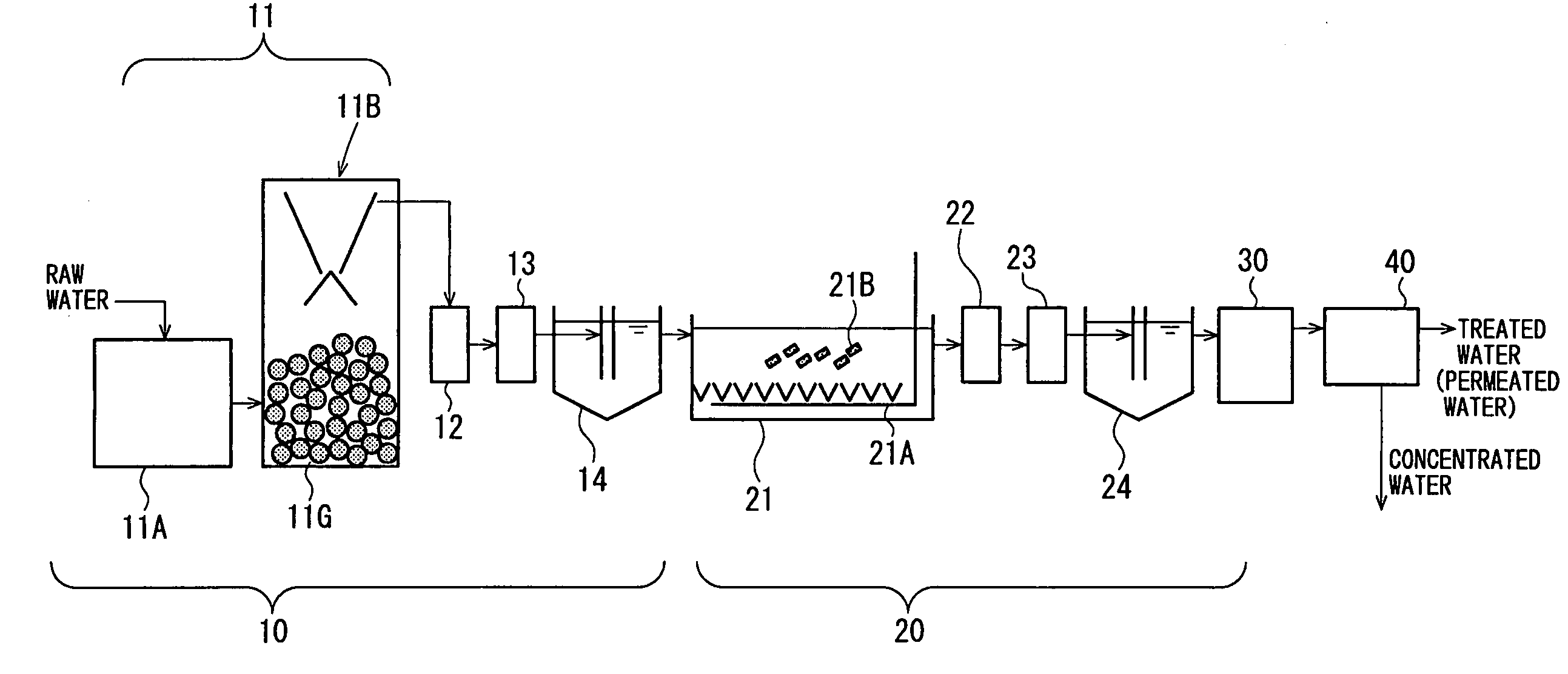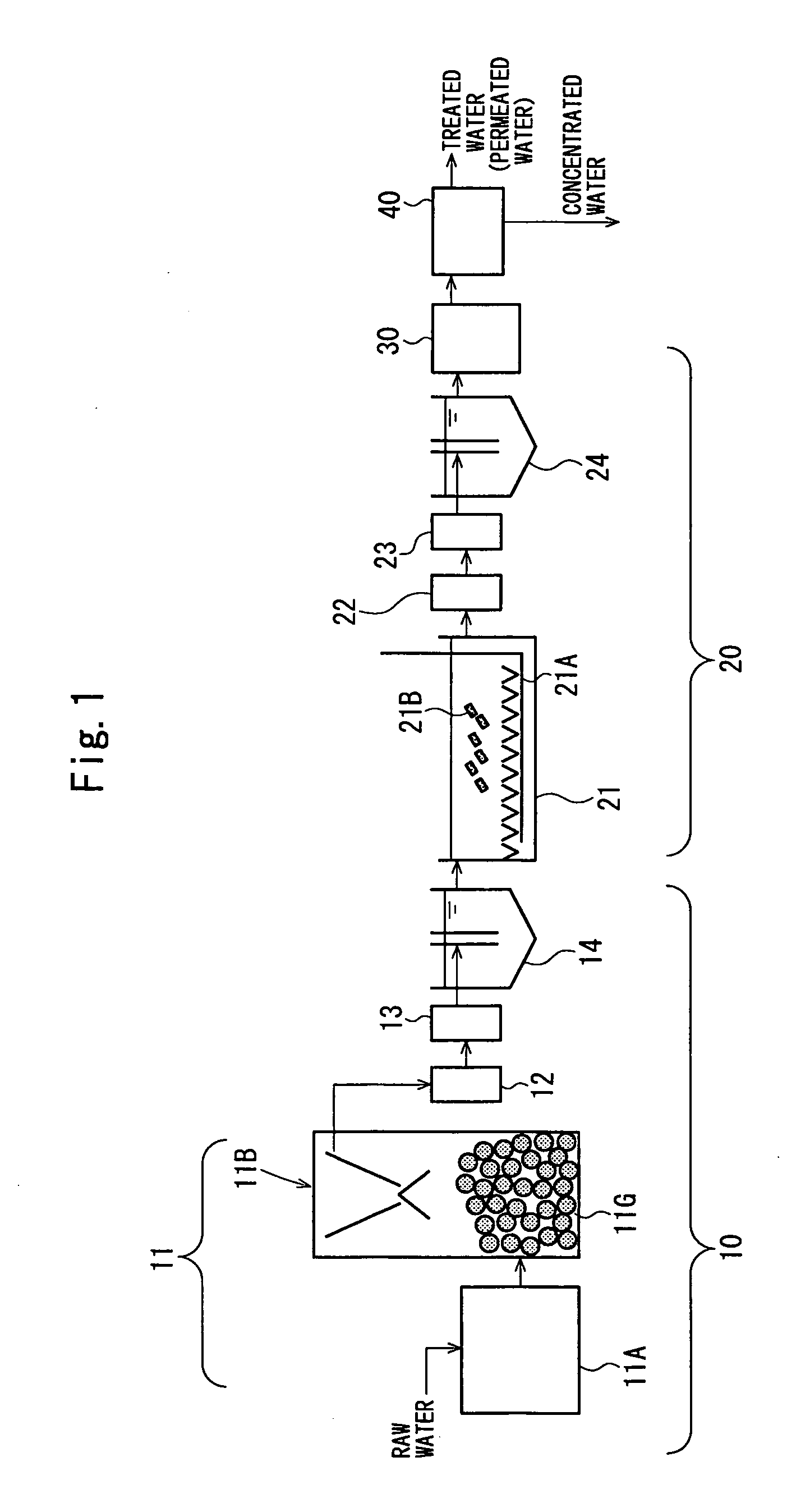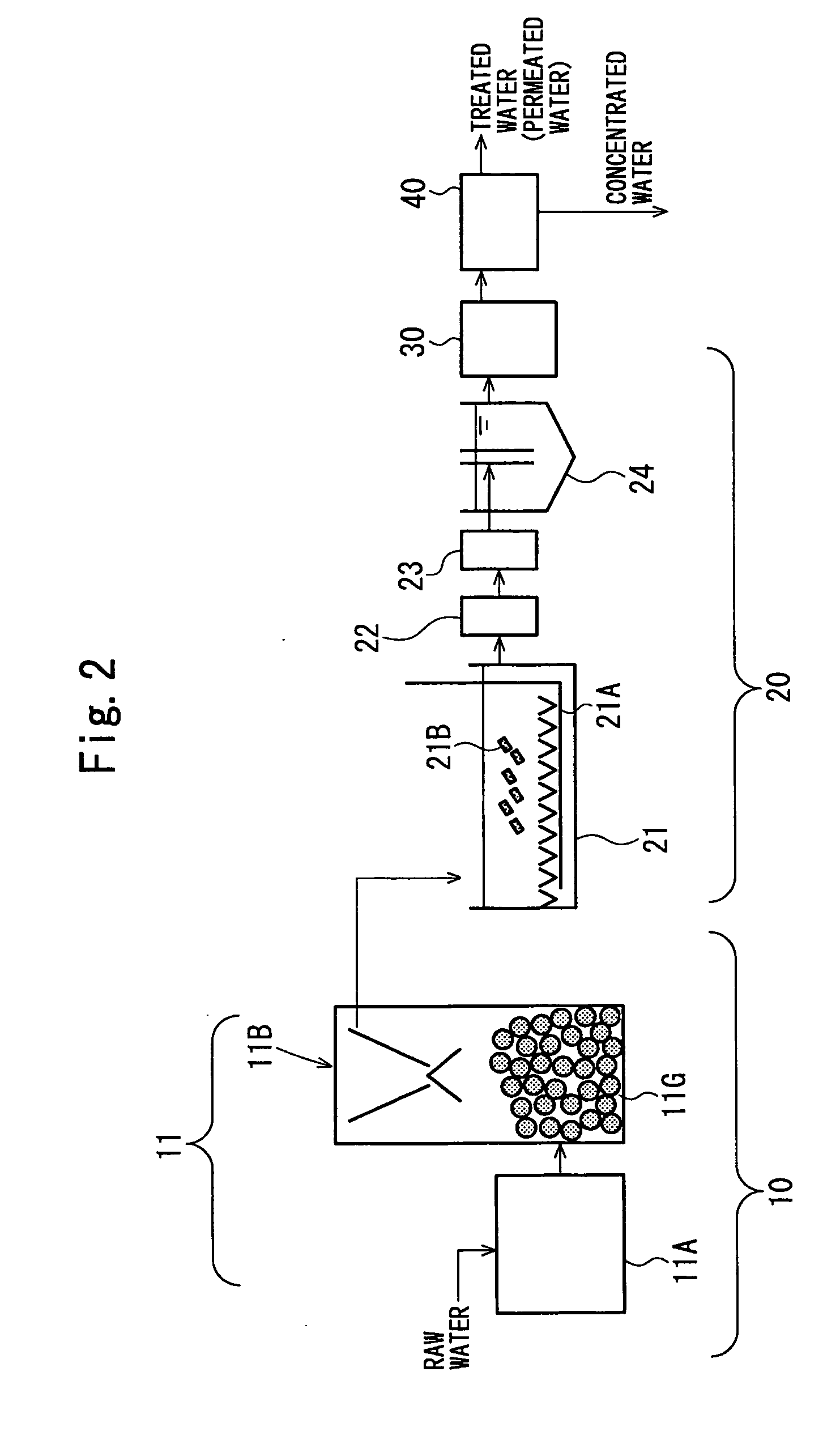Apparatus and Method for Treating Organic-Containing Wastewater
- Summary
- Abstract
- Description
- Claims
- Application Information
AI Technical Summary
Benefits of technology
Problems solved by technology
Method used
Image
Examples
Example
Examples 1 and 2 and Comparative Example 1
[0068]Industrial wastewater of the quality below which contained ethyl alcohol as a main component was used as raw water and treated in an amount of water to be treated of 1000 L / day by the apparatus shown in FIG. 1 (EXAMPLE 1), FIG. 2 (EXAMPLE 2), or FIG. 3 (COMPARATIVE EXAMPLE 1). For biological treatment of the raw water, ammonium sulfate and phosphoric acid were added to the raw water so that TOC:N:P=100:15:3 because it was supposed that the raw water was lack of nitrogen and phosphorus.
[0069]S—CODCr: 1380 mg / L
[0070]S-TOC: 368 mg / L
[0071]Kj-N: 7.8 mg / L
[0072]PO4—P: 0.6 mg / L
[0073]Table 1 shows the specifications of the apparatuses and the treatment conditions used in EXAMPLES 1 and 2 and COMPARATIVE EXAMPLE 1.
[0074]Table 2 shows variation per day of water quality in each portion and Table 3 shows variation per day of the flux reduction rate of the RO membrane separator.
[0075]Table 4 shows the reaction tank area per quantity of water to be t...
Example
[0077]In EXAMPLE 1, most of the organic substances in the raw water can be removed by the anaerobic reaction tank including the acid production tank and the UASB reaction tank and further removed as SS by solid-liquid separation in the No. 1 sedimentation tank before autolysis of the microorganisms produced in the anaerobic reaction tank proceeds. In addition, the water separated by the No. 1 sedimentation tank is further treated by the aeration tank to further highly degrade the residual organic substances and SS is removed by the No. 2 sedimentation tank. Consequently, treated water having low S-TOC and low SS can be obtained by the anaerobic reaction tank and the aeration tank having a total volume smaller than the volume of the aeration tank in COMPARATIVE EXAMPLE 1. Further, since coagulation treatment can be sufficiently performed with a small amount of the coagulant added to the coagulation tank, treated water suitable for membrane separation can be obtained with the coagulan...
Example
[0078]In EXAMPLE 2, solid-liquid separation is not performed in a stage after the anaerobic reaction tank, but the resultant treated water has a lower S-TOC value and a lower SS value than in COMPARATIVE EXAMPLE 1.
[0079]The flux reduction rates of the RO membrane separator in both EXAMPLES 1 and 2 are significantly improved as compared with COMPARATIVE EXAMPLE 1, but EXAMPLE 1 exhibits a higher improving effect than COMPARATIVE EXAMPLE 2.
[0080]Therefore, in the present invention, the organic substance load can be mostly removed by the anaerobic reaction tank, and thus the aeration tank can be decreased in size. Therefore, the total reaction tank area can be decreased by about 30% and about 45% in EXAMPLES 1 and 2, respectively, as compared with in COMPARATIVE EXAMPLE 1.
[0081]These results indicate that the configuration of EXAMPLE 1 is preferred when treated water of higher quality is required, and the configuration of EXAMPLE 2 is preferred when there is more need to decrease the i...
PUM
| Property | Measurement | Unit |
|---|---|---|
| Current | aaaaa | aaaaa |
| Digital information | aaaaa | aaaaa |
| Separation | aaaaa | aaaaa |
Abstract
Description
Claims
Application Information
 Login to View More
Login to View More - R&D Engineer
- R&D Manager
- IP Professional
- Industry Leading Data Capabilities
- Powerful AI technology
- Patent DNA Extraction
Browse by: Latest US Patents, China's latest patents, Technical Efficacy Thesaurus, Application Domain, Technology Topic, Popular Technical Reports.
© 2024 PatSnap. All rights reserved.Legal|Privacy policy|Modern Slavery Act Transparency Statement|Sitemap|About US| Contact US: help@patsnap.com










